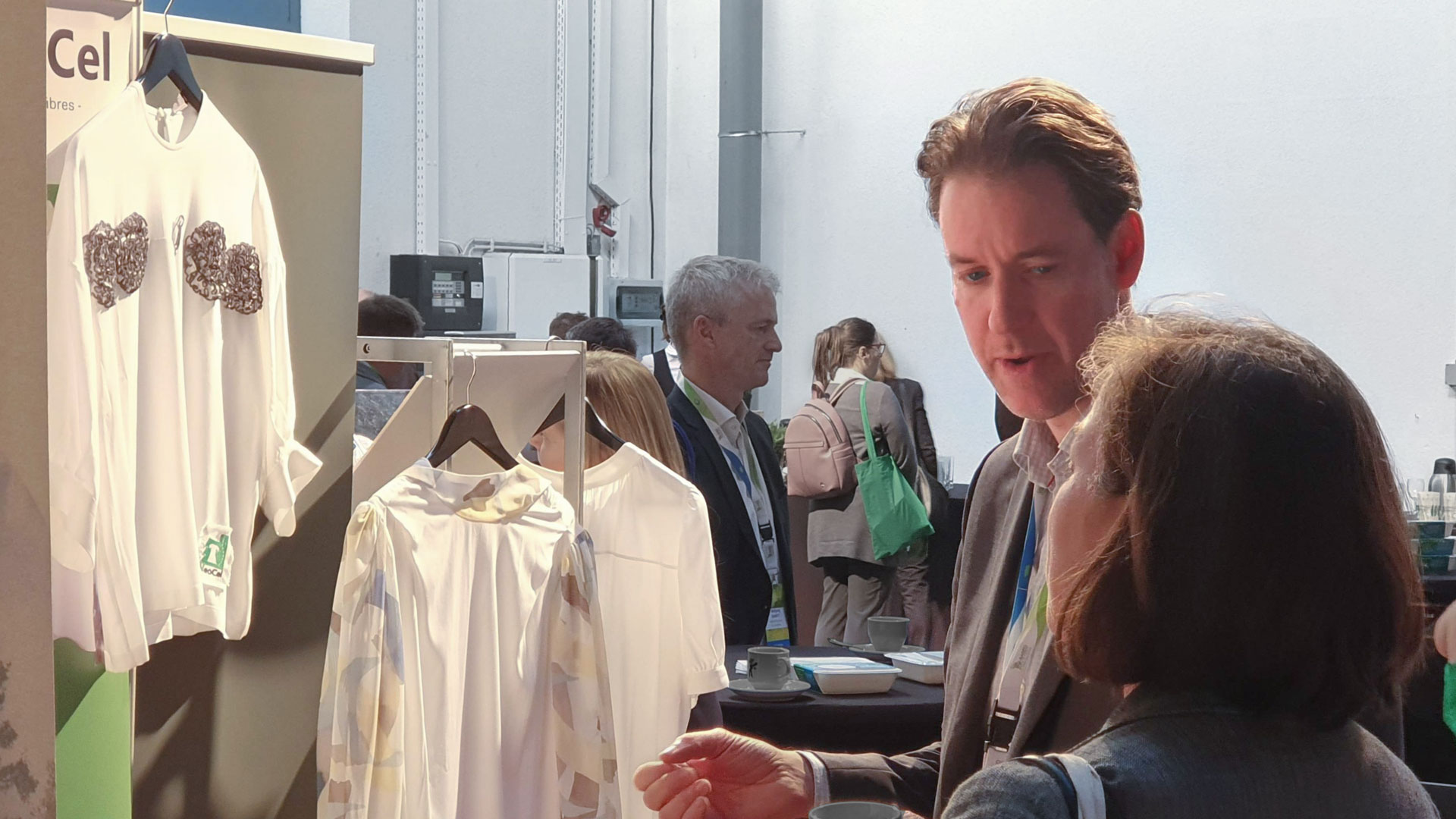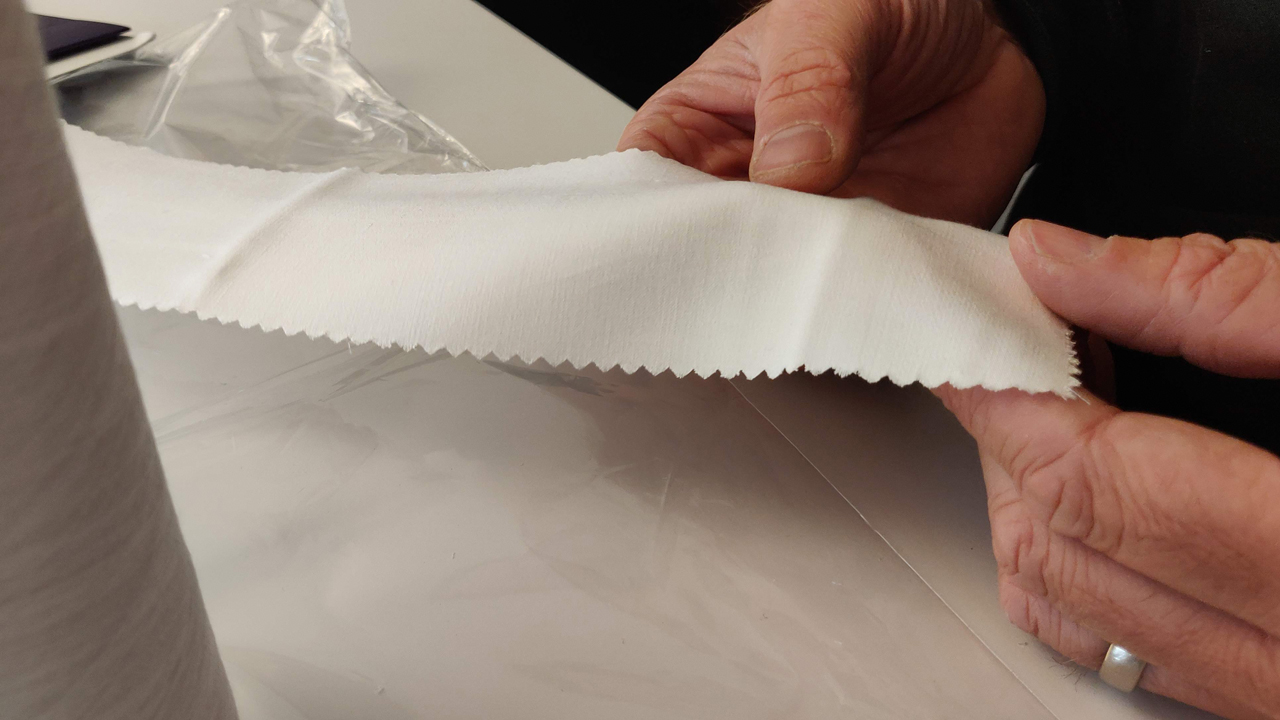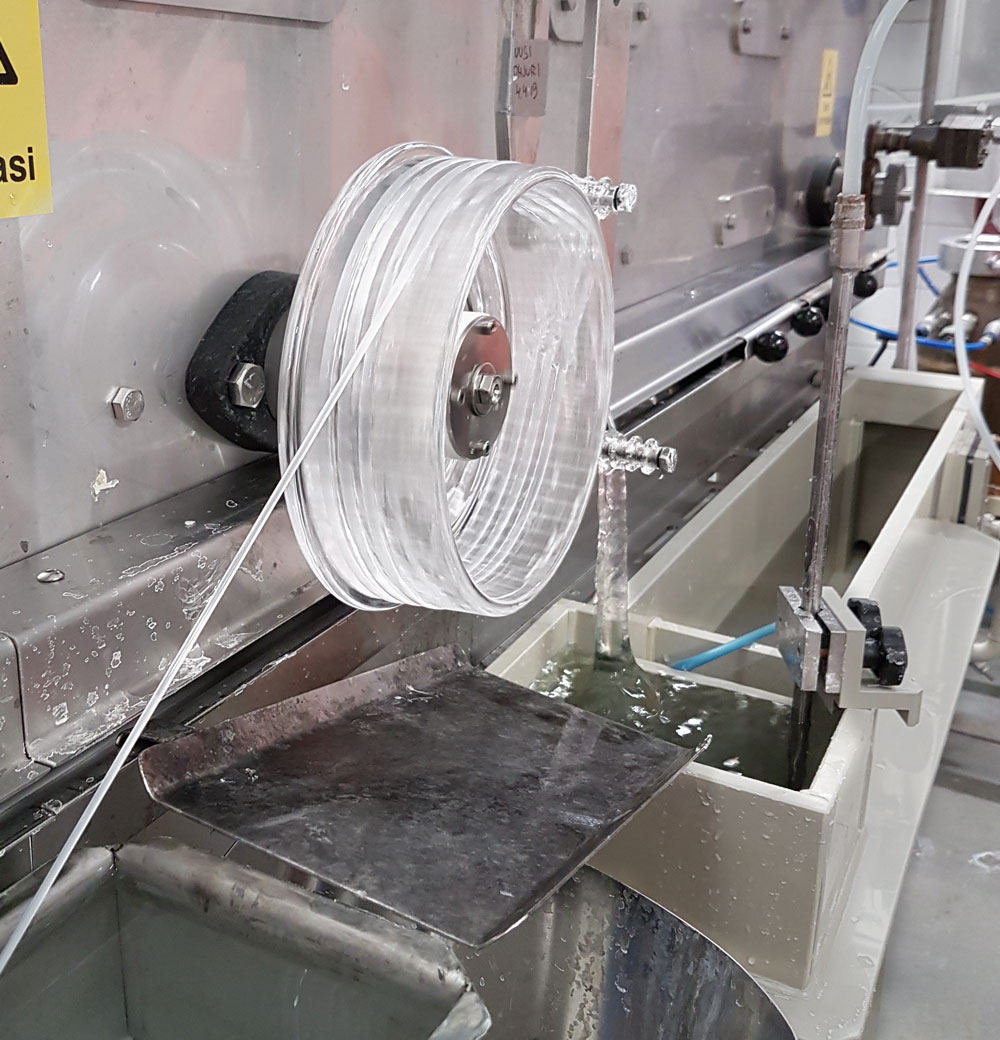A benchmark with NeoCel and todays production of viscose show almost zeroed hazards to workers and indications of halved environmental impact. The comparison also implies that the cost to achieve this could be only 10% higher. Neocel is a process but also a fibre and fabric just like viscose. While both are made from biofibre (usually wood) the processes differ. With the cold alkali process of NeoCel, worker hazards from using carbon disulphide are removed. As chemicals can be regenerated to a high degree, the life cycle assessment indicates halved environmental impact of the fibre production. The techno-economic assessments indicate that the costs for investment and production of fibres would be about 10% higher, mostly due to the energy cost of regenerating the chemicals.
From fibre to fabric to garment
The NeoCel research teams have considered the whole value chain, from raw material to garment, in developing techno-economically feasible textile fibres. The NeoCel process could produce competitive textile fibres and has in lab scale demonstrated that it is possible to use existing resources and infrastructure at pulp mills.
The European pulp and paper industry is exploring new revenues as paper consumption is reduced and global competition increased. NeoCel has explored how a new cellulose dissolution/regeneration process, combined with pulp mill integration, can be the key for better environmental and economic performance of textile fibre production. Such a process would offer interesting business opportunities for pulp mills and could promote a revival of pulp and paper industry in Europe.
New fibre production capacity is necessary
The major part of the negative impact that textile garments have on the environment originate from its production (approximately 70 percent in Sweden). There is an ever-increasing demand for textile products as the world population continues to grow and it cannot be sustainably met with fossil-based fibres or cotton. Cotton cultivation is associated with high water and pesticide consumption, and a scarceness of new land for exploitation.
The market share of polyester and cotton, is eventually expected to shrink or stagnate due to price and sustainability issues. The only fibre type with potential for long term increase in production volumes is man-made cellulosic fibres. Today, the viscose process is the dominating technology. Environmental and occupational issues related to the viscose process in Asian factories, accounting for almost 80% of the global production, are considerable. Economically and technically feasible regenerated cellulose process technologies based on renewable raw materials are necessary to satisfy future global demand in a sustainable way. The project explored a potential to lower environmental impact by a combination of utilizing sustainable raw material sources for which availability can increase, and water-based cold alkali dissolution process for fibre production.
The chemistry and energy principles
Current wood-based textiles, like viscose, depends on a production that is energy demanding and requires the use of carbon disulphide (CS2) – a toxic chemical that imposes hazards both to workers and the environment. With the NeoCel process – which utilizes cold alkali without CS2 – the risks of CS2 are removed. Several other risks will be significantly reduced. This alternative process is highly desirable as it can be environmentally benign. As the energy consumption is increased due to the electrolysis to regenerate chemicals, production needs to be located where sustainable energy is available.
Integration to pulp mill is crucial
In order to reduce environmental impact and cost, an essential part of the project is devoted to the system integration with the pulp mill. The integration should lead to increased energy efficiency and regeneration of the chemicals. Textile fabrics and garment prototypes have been manufactured and evaluation of the new textile fibre properties and processes throughout the whole chain from fibres up to final product has been collected for further process development and future demonstration phases.
NeoCel project facts
- September 2016 – Dec 2019
- € 3.62 million
- Whole value chain
Partners
RISE is a Swedish research institute with 2700 employees with a mission to contribute to a sustainable society.
VTT is a visionary research, development and innovation partner from Finland that drives sustainable growth.
Katty Fashion is a Romanian producer of the entire range of women apparel, specialized in short series and customized clothing.
Swedish FOV Fabrics thrives at the textile frontier by fusing textile functionality with circular sustainability, including cutting-edge R&D.
The activities of Ing. A. Maurer S.A. from Switzerland range from feasibility studies to supplying turn-key plants for viscose and new sustainable fibres.
Andritz OY in Finland is a global supplier of systems, equipment and services for the pulp and paper industry – including wood and fibre processing and chemical recovery.
The recycling technology of Swedish Re:newcell transforms cellulosic waste into pure, natural dissolving pulp in a process that reuses chemicals.
Nouryon in Sweden supplies performance ingredients for the pulp and paper market with pioneering solutions that improves quality.
The main products from Swedish Domsjö Fabriker are cellulose, lignin and bioethanol, all with an origin in the sustainable Swedish forestry.
German AB Enzymes delivers technically advanced enzymes in a that can open fiber surfaces to create fibrillation more sustainably.
In Finland Roal performs biotechnical research and produce enzymes for industrial applications in food, feed and technical industries.
LIST Technology is a company from Switzerland that develops and manufactures kneaders to intensify industrial processes.
Söktas is a Turkish specialist maker and supplier of cotton and cotton blended shirtings.
Text by Joakim Nordblom – RISE Research Institutes of Sweden





